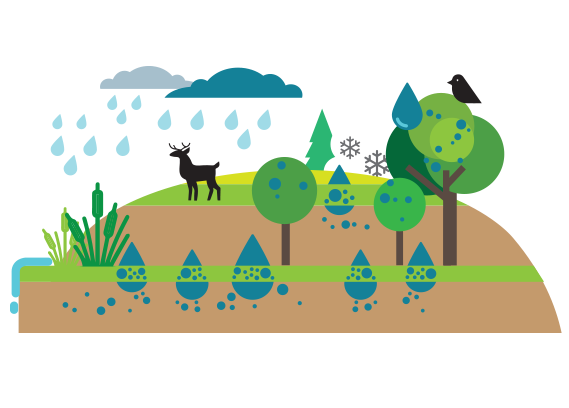Green infrastructure tools and how they work
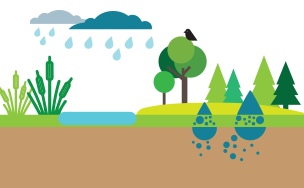
Preserving natural areas
Natural areas are the original form of green infrastructure. Protecting existing trees, shrubs, and other plants that absorb rainfall and snowmelt can have a huge impact on preventing stormwater runoff.
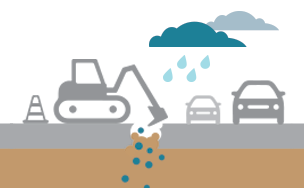
De-Paving
Reducing the amount of paved surfaces on streets, parking lots, driveways or sidewalks offers more green space to absorb water, keeping it out of the sewer system.

Water-smart development
Applying the right site design, grading and materials, including limiting the amount of impervious surfaces, can all work together to keep water where it falls on new development projects.
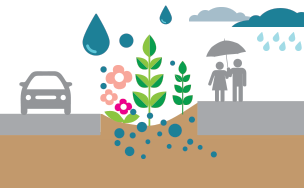
Rain Gardens
These plant beds collect stormwater runoff from impervious surfaces like streets, parking lots, and sidewalks, allowing rain and snowmelt to absorb into soils rather than running off into sewers and eventually reaching our waterways.
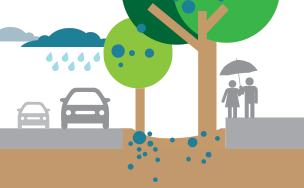
Trees
Trees capture and store rain in their leaves and roots and release it into the atmosphere. When located along streets, trees help manage stormwater runoff from roadways and sidewalks.
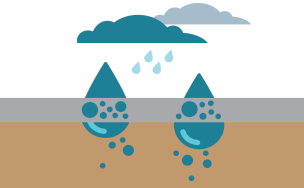
Porous Pavement
Porous pavement, or permeable asphalt, looks like conventional pavement but actually has spaces in its surface that allow rain and snowmelt to pass through the surface and flow into the ground rather than into storm inlets on the sides of curbs.
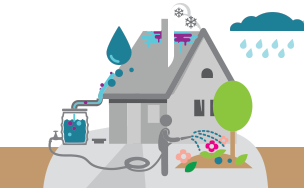
Rain Barrels and Cisterns
Rain barrels capture and store stormwater runoff from roofs for outdoor household needs. Though not safe for drinking, this water can be used for other activities that would normally require using the tap, like watering plants or washing cars.
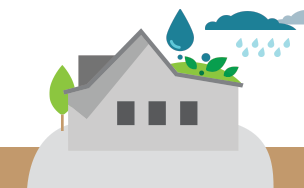
Green Roofs
Green roofs place a layer of spongy soils and vegetation on top of flat or gentle-sloping roofs to capture and absorb stormwater that otherwise would run off tops of buildings and eventually drain into the sewer system.
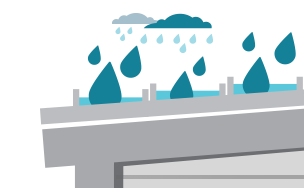
Blue Roofs
Blue roofs are designed to temporarily capture and gradually release stormwater with small openings and drain inlets that control the flow of rooftop drainage.
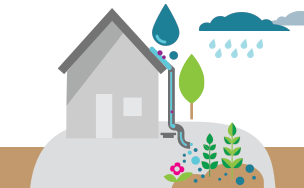
Downspout Disconnections
Downspout disconnections redirect water that would otherwise flow into the sewer system into alternative water collection systems, like lawns, flower beds, rain gardens, or specially designed infiltration systems.
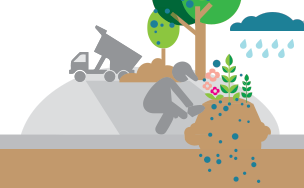
Filling Vacant Lots with Green Infrastructure
Where vacant lots are permanently protected or owned by community members, enhanced landscape features like pollinator or community gardens can be installed. The added vegetation on these landscapes absorbs more stormwater than a conventional lawn.
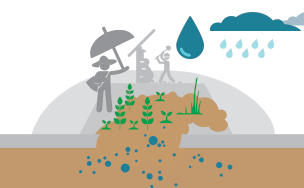
Green Post-Demolition Treatment
Once all structures and paved surfaces are removed from a demolition site, 4 to 6 inches of spongy soil and seed mix can be added to encourage development of a low growing turf grass to increase the amount of water absorbed on site.
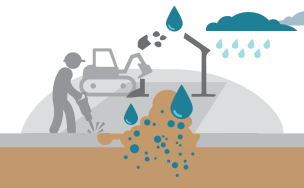
Traditional Demolitions
Demolition removes impervious surfaces, like roofs and driveways, from lots while protecting existing vegetation, like large trees, as much as possible. This allows stormwater to soak into the ground where a building once stood rather than flowing into the sewer system.

